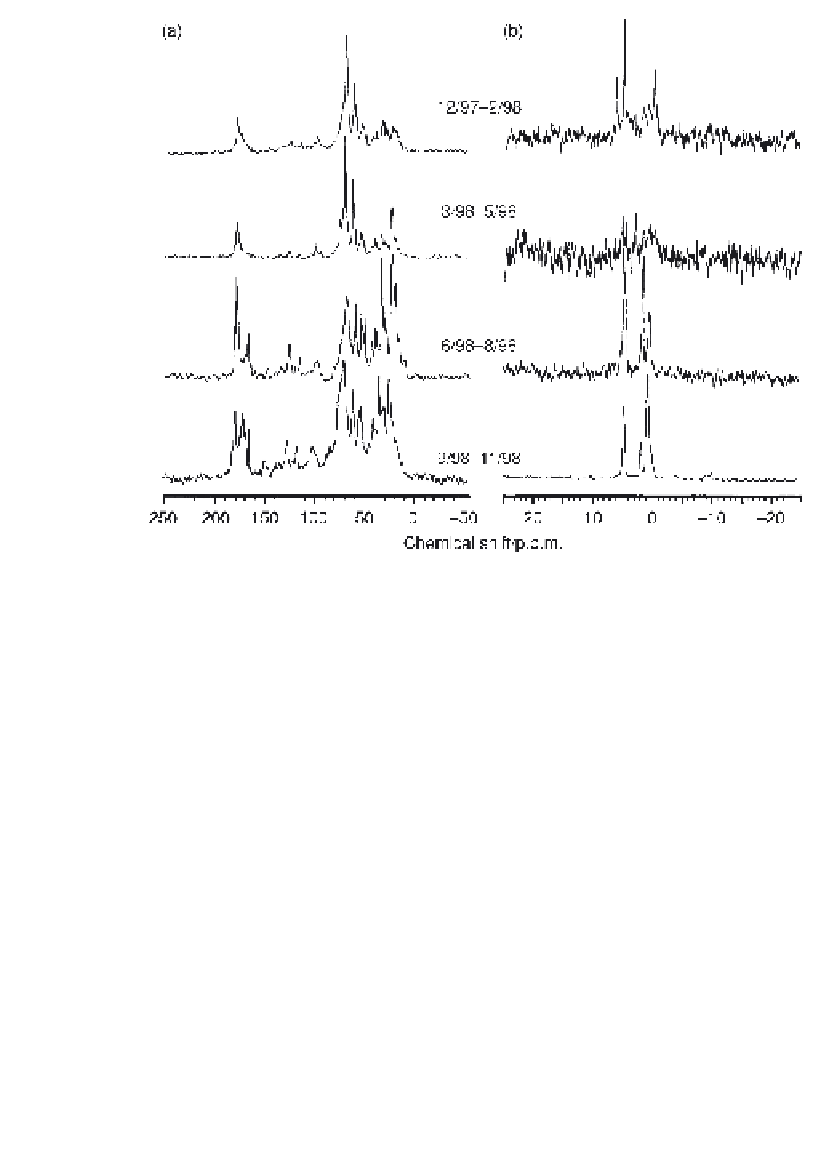Agriculture Reference
In-Depth Information
Fig. 4.4.3.
Liquid-state
13
C- and
31
P-NMR spectra of organic carbon (a) and phosphorus (b) in
forest floor seepage waters of Lithic Rendolls covered with an European beech (Fagus sylvaticaL.)
forest in winter 1997/98 and spring, summer and autumn 1998.
Monoester and sugar diester P (0.0-3.0 p.p.m.) again indicated release of
DOM due to enhanced decomposition. Sugar diesters, e.g. teichoic acids,
are assumed to originate from microbial biomass (Condron
et al
., 1990),
and so their large signals, especially in the summer sample, underline the
microbial contribution to the DOM.
Retention of DOC and dissolved organic nutrients in the upper mineral
horizons was limited (Table 4.4.2). Neither the concentrations of DOC nor
those of dissolved organic nutrients in the soil solution decreased. Instead,
the concentrations of DOP tended to increase during the passage of the
topsoil. During the further passage through the sub-soil, the total DOC
concentration decreased by
45%; that of hydrophobic DOC by 53%.
Compared with total DOC, all nutrients in organic forms were leached
preferentially from soil, especially DOP and DOS. The enhanced mobility
of dissolved organic nutrients could be due to their enrichment in the
mobile hydrophilic DOM fraction (e.g. Qualls and Haines, 1991; Anderson
et al
., 1999).
Heavy rain events in autumn 1998 (September 11-16, October
24-November 6) induced rapid flow through macropores. As a result, the
∼











Search WWH ::

Custom Search